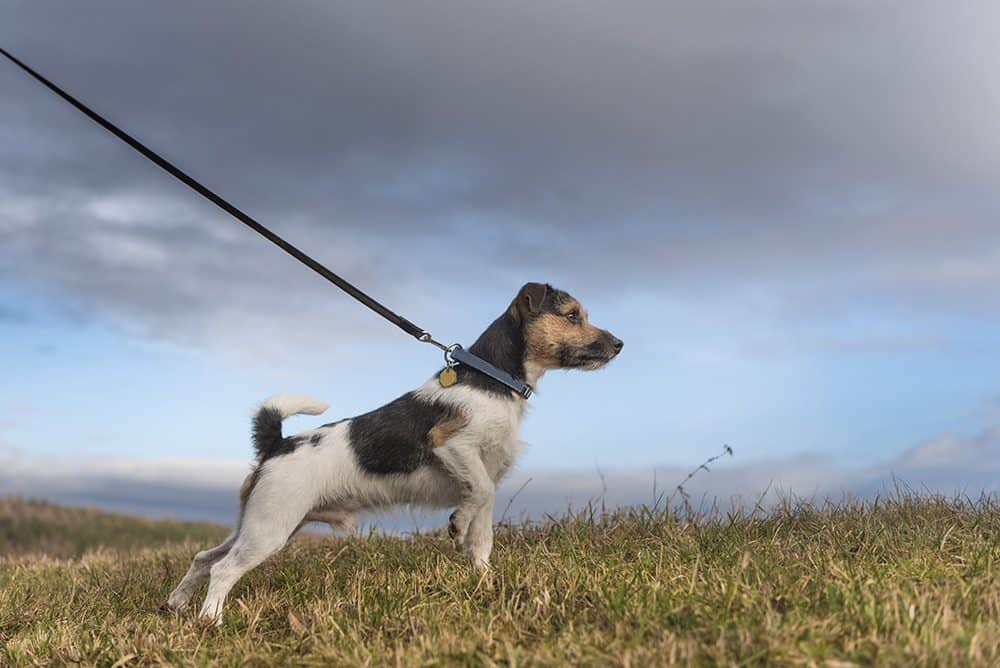
As with so many things in a dog’s life, pulling on the lead is a behaviour that starts in puppyhood. A small, eager puppy, exploring the world with all its intriguing sights, sounds and smells for the first time, soon learns that pulling gets them where they want to go quickly.
Puppy owners, who watch that excited little face with delight, are only too happy to let them. By the time the puppy has grown bigger and stronger, pulling is not so acceptable for them, or you. Your young dog risks hurting their neck and you find yourself waged in a two-way battle, trying to stop a behaviour that has already become well established.
Dog training expert and presenter of TV’s It’s Me or the Dog Victoria Stilwell explains it like this: “Dogs love to be outside, and the walk is a stimulating and exciting part of their day, so the desire to push ahead is very strong. Humans do not make ideal walking partners since a dog’s natural and comfortable walking pace is much faster than ours. Having to walk calmly by a person’s side when the only thing a dog really wants to do is run and investigate his environment requires a degree of impulse control that can be very difficult for some dogs to utilise.”
Rather than focusing on stopping them pulling, the key is to focus on teaching and rewarding your dog to walk nicely beside you, concentrating on changing the consequences for your dog if he or she pulls.
FOLLOW THE 3 STEP LOOSE LEAD TRAINING GUIDE
The RSPCA provides a useful guide to teaching your dog to walk without pulling – although success requires time, patience and consistency. Each dog is different and how long it takes them to learn that pulling only slows them down will vary enormously. These are the steps the RSCPA recommends:
- Start by standing still and quiet. Allow your dog the full length of his lead. Remain still and quiet when your dog is ignoring you but the split second he pays you attention praise him and give him a treat.
- Once you have your dog’s attention you can move off – use your voice and treats to encourage your dog to stay close to you when walking. Always reward your dog when they are walking on a loose lead.
- If your dog moves too far away from you, before the lead goes tight, stop and be still and quiet until he pays you attention and moves closer to you. Reward and move off again. This must happen every single time your dog moves too far away and the lead starts to tighten.
TOP TIPS
- Practice this routine in short and regular sessions.
- Make the area around you fun and rewarding so that your dog enjoys being closer to you.
- Lots of encouragement through praise and treats will stop him racing towards his destination.
NO TIME TO TRAIN?
Sometimes, you just have to take your dog out without having the time to practice and reinforce the stopping and rewarding loose lead behaviour training. In these situations, dog trainer and behaviourist Carolyn Menteith at Dogs Trust recommends using a harness or head collar.
- While a harness (which need to be the right size for your dog, fit properly and be comfortable) won’t stop a dog from pulling, it takes the pressure off their sensitive neck by distributing the pressure more evenly around the body. It also provides you with more control.
- When a dog wears a head collar and pulls, it turns their head sideways and they quickly learn that to move forward they have to stop pulling.
- Never, ever use a choke chain. These are designed to cause pain or discomfort and can injure the dog.
NEED MORE HELP? Dogs Trust also has a really useful training video, presented by Carolyn Menteith, which you can watch here
Sources: positively.com, rspca.org.uk, dogstrust.org.uk














